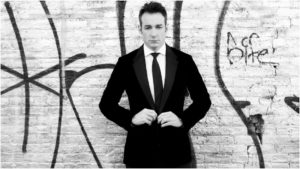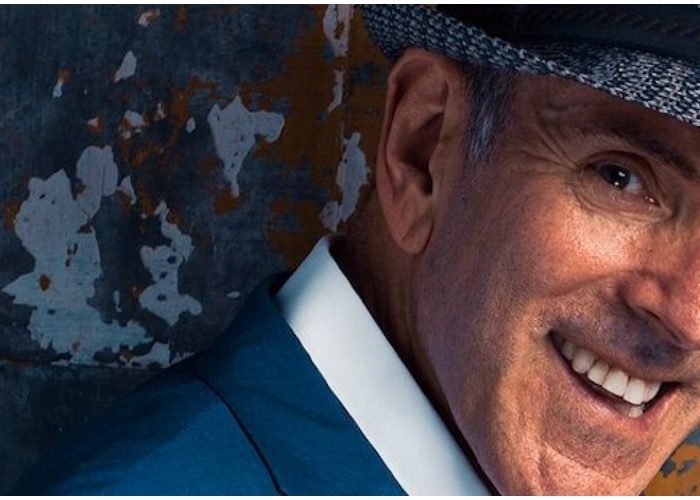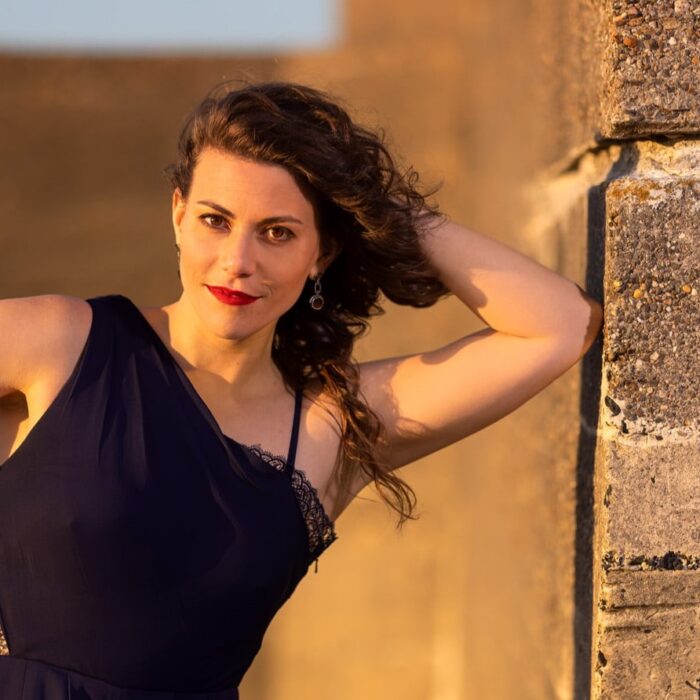
Interview: Tenor Stephen Costello’s Debut Double-Header
The Tenor On ‘Carmen’ & Dmitri Hvorostovsky’s Impact On His New Album
By Chris RuelWhat’s a nice guy like the 2009 Richard Tucker Award-winner Stephen Costello to do when playing a character known for anger issues and a jealous streak a mile wide? Go for sympathy, make the audience empathize with “a lost person with a good heart.”
That’s what Costello did for his role debut as Don José in the Dallas Opera production of “Carmen” earlier this month.
Costello’s role debut at the Winspear isn’t the only thing the singer has going on this fall; mid-November sees the release of his first solo album, “A Te, O Cara: Stephen Costello Sings Bel Canto,” an album dedicated to his dear friend Dmitri Hvorostovsky. The recording holds special meaning for the Philadelphia-born singer since Costello credits Hvorostovsky as the person who made the album come together and encouraged him to take chances in the studio and onstage.
The Big D & José
Dallas is a city Costello knows well, and opera-goers in “The Big D” recognize the tenor for his leads in each of Donizetti’s Tudor operas at the Winspear. It seemed fitting for Costello to put his unique spin on the jealousy-fueled, rage-prone Don José in the city where he has performed some of his most memorable roles.
“Doing something in Dallas for the first time with (conductor) Emmanuel Villaume was great; he was such a help on ‘Carmen’ because he has done it so many times. It’s the opera with which he’s connected the most—it’s his piece. What I enjoyed about working with him is that he allows things to happen naturally. For example, take the aria ‘La fleur que tu m’avai jetée’ – it’s a great aria, something I’ve always wanted to do: with Emmanuel, we didn’t really follow one another, we just felt it organically, and it always worked,” Costello noted in a recent interview with OperaWire.
The music of “Carmen” is easily recognizable to non-operagoers; the Prélude, “Toréador, en garde” and “L’amour est un oiseau rebelle” are pieces well-known to the public, and “Carmen” is one of those gateway operas, hooking new audiences with its musical familiarity.
But such a well-known opera can pose challenges for singers.
“It all comes down to this; every tenor who goes up on stage can sing the same actual notes. The challenge is finding something about a role that makes it unique to you and makes people want to listen to you do it.”
And Costello found that unique something by focusing on the character of Don José.
“Often in opera, it’s hard to find a character arc, but Don José is really transformed by the end of the opera. If you think about the Duke in ‘Rigoletto,’ for example, he’s kind of the same person throughout the entire opera, but that’s not the case with Don José.”
Those familiar with the story of “Carmen” know that before Don José encounters Carmen, he’s a reasonably innocent guy. But after meeting Carmen things get interesting, as he deserts from the army, joins a smuggling ring, and then commits murder. How did Costello prepare for his character’s tumultuous transformation?
“I approached his character like a high school teenager who’s had a bad break-up; we’ve all felt the terrible jealousy of seeing the person you were dating with someone new.
“When Don José sees Carmen with Escamillo, his rage is completely irrational. I needed to show constant jealousy. Don José’s suspicion has got to be there whenever Carmen is on stage. There’s the scene in the second act in which Zuniga comes looking for Carmen. As Don José, I’m thinking: Why is Zuniga here? What’s he doing? What did Carmen do? I tried to play him as a lost person with a good heart, but then there’s a side of himself he can’t control.”
“I honestly don’t think – when it comes to the fourth act – that Don José goes in intending to kill Carmen,” he continued. “I think he actually goes in trying to win her back, but that doesn’t work out, as we know. My goal was to portray Don José in a way that leads the audience to feel sympathetic towards him—even after he murders Carmen.”
Character portrayal aside, “Carmen” presented special vocal challenges for Costello. With an unusual amount of dialogue in the Dallas production, the tenor had to adjust to the substantial speaking part of the role and to learn how to perform it as such without hurting his voice.
“I’d warm up in the dressing room, get called to the stage, go on, and then stand around for 25 minutes before I sang a single note; but I was speaking the entire time. It’s not easy unless you’ve done it many times: it’s just not something you’re really taught how to do.
“I started to push my voice without realizing it, and I got tired quickly. I learned early on in rehearsals that it was mostly because I was saying the lines, in the same way, I would speak but trying to make it louder. That put so much pressure on my voice. The first week I’m feeling really great; the second week, I’m feeling a little tired. It was the dialogue. I came to understand that I had to approach the speaking parts as if I were doing the whole performance in dialogue. It was tricky: kind of like learning how to sing all over again.”
Cut-throat Opera
Standard practice has Don José stabbing Carmen in the torso during the final scene, but that’s not the way things went down in Dallas. The manner in which Don José kills Carmen was rather gory.
“It’s difficult to wrap your head around actually killing someone. I think that was the hardest part for me. In this production, when Don José kills Carmen he slashes her throat. He pulls the knife, pushes her against the wall, and blood shoots out of a tube, getting all over the place; it actually looked as though her throat was being cut. And the way the air moved out of the tube made it sound as if her esophagus were slashed. It was insane.”
How did the Dallas audience react to this gory scene?
“I think it made them enjoy it more since it looked so realistic. Honestly, the way they reacted was just nuts. Every time we did it in rehearsal or in performance everyone gasped as if they thought I had really hurt her.”
And Carmen’s death scene was all the more potent because of the onstage chemistry between Costello and mezzo-soprano Stéphanie d’Oustrac. Carmen is often played as a stereotypical slinky seductress, but that’s not how d’Oustrac crafted the character, and her spin gave Costello much to use as he constructed his Don José.
“Stéphanie created a strong Carmen, and she used her strength and presence as the sexy factor. If both of us had played really strong-willed characters, it wouldn’t have come off as well. Carmen is the role Stéphanie has done the most, and the fact that she has performed it so many times helped me because her foundation is so solid.”
Dedicated To A Dear Friend
As he prepared the role of Don José, Costello was also preparing another debut in his career.
He recorded his first solo album, “A Te, O Cara: Stephen Costello Sings Bel Canto,” a recording he feels was a direct result of his friendship with the late Dmitri Hvorostovsky. As a result, he dedicated the album to Hvorostovsky, making its title – “To you, o dear one” – particularly poignant.
“Dima was a really close friend of mine and he was one of the reasons I was able to make the recording. He introduced me to my manager, and to Constantine [Orbelian]. I think if Dima hadn’t done those things, I wouldn’t have done the recording. It all came together because of him,” Costello explains.
The album also gave an opportunity for Costello to work with Hvorostovsky’s great friend conductor Constantine Orbelian and his orchestra the Kaunas City Symphony.
“The first project I did with Constantine was a recital in St. Petersburg. Dima had done a lot of projects with him; the two were good friends. I worked with the maestro on a couple of concerts in Armenia. I think he’s terrific—a really nice person and an excellent conductor, especially in a recording situation.”
“A Te, O Cara” focuses on bel canto arias, and Costello’s aria choices reflected his strong connection with the style and a desire to keep things interesting, as well as anticipating future changes in his voice.
“Bel canto music has been part of my life from the beginning; it suited my voice the best. I love the lines, the long phrases, and how you’re able to shape them and I wanted to do an album of bel canto before my voice started to change more and I lost the chance to capture the arias in the studio. For everything on the recording – even if I did it a million times – I wanted to find something new that I could try out. This has made my recent music-making more interesting.”
And when he went into the recording studio Costello took a number of chances recording arias he had never performed and others he had rarely done.
“There are things on the recording that I’ve never done or I’ve only sung a few times,” Costello said. “I’ve done ‘La fille du régiment’ once, and I’d love to do it again. I’ve never sung ‘Don Pasquale,’ but I’ve always wanted to, and there are tracks like the one from ‘Don Sebastiano’ which no one ever records, although you might hear it at a recital. I didn’t want to do a solo album of all the greatest tenor hits. I like listening to albums where the arias have some sort of a connection, even if there are new ones I’ve never heard.”
As with his portrayal of Don José in Dallas, Costello spoke of taking familiar things and infusing them with new life by focusing on details and by taking risks—things Mr. Hvorostovsky encouraged.
“What I’ve been working on over the past year is becoming a better artist in general and taking more chances. Sometimes it works, sometimes it doesn’t. But you can’t be afraid to do something. I think the hardest thing about being a singer is to do something because you want to and not worry about what other people are thinking. With ‘Carmen,’ I took more chances with colors, different dynamic choices, and more intention. I believe I got more of an audience response taking risks.”
“These are things I worked on with Dima in the past couple of years. He would say to me, ‘Oh, just go out and do it; take the chance.’ When I sang an aria in concert with him, he would say, ‘Yeah, see that’s beautiful! That’s what you need to do!'”


